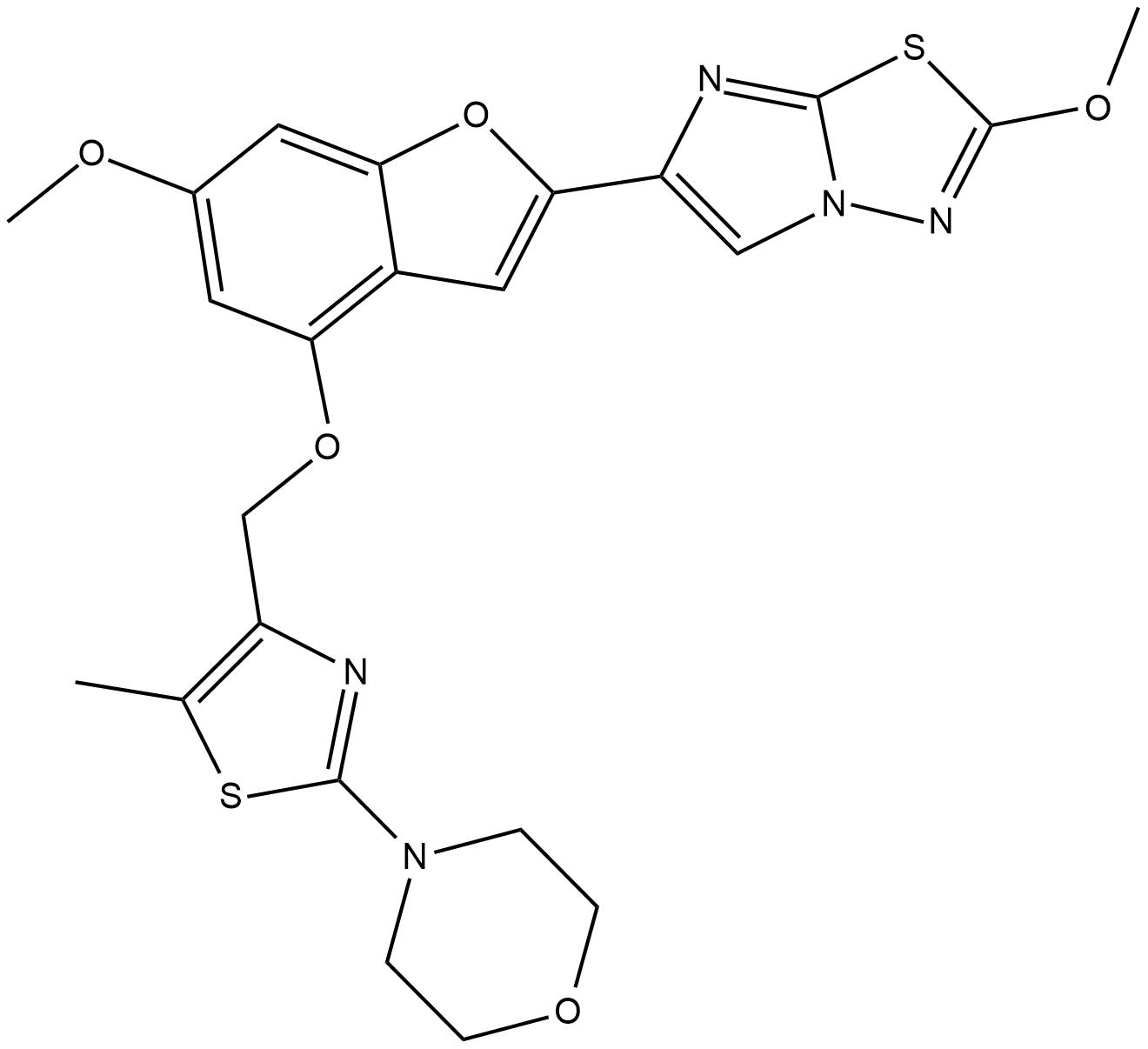BMS 986120 |
| Catalog No.GC18717 |
BMS 986120 est un antagoniste oral et réversible du récepteur 4 activé par la protéase (PAR4) premier de sa catégorie, avec des IC50 de 9,5 nM et 2,1 nM dans le sang humain et de singe, respectivement.
Products are for research use only. Not for human use. We do not sell to patients.

Cas No.: 1478712-37-6
Sample solution is provided at 25 µL, 10mM.
BMS-986120 is a first-in-class oral and reversible protease-activated receptor 4 (PAR4) antagonist, with IC50s of 9.5 nM and 2.1 nM in human and monkey blood, respectively. BMS-986120 has potent and selective antiplatelet effects[1][2].
BMS-986120 has high binding affinity to PAR4 expressed on HEK293 cells and inhibition of PAR4-induced calcium mobilization with an IC50 of 0.56 nM[3].
In monkeys, BMS (1 mg/kg) does not inhibit PA induced by PAR1-AP, ADP and collagen, supporting selectivity. BMS (0.2, 0.5, 1 mg/kg) reduces TW by 35±5, 49±4, and 83±4%, respectively. Maximum KBT and MBT increases are only 2.2-fold and 1.8-fold, respectively[1].
References:
[1]. Pancras C Wong, et al. Abstract 175: A Novel Orally-Active Small-Molecule Antagonist of the Platelet Protease-Activated Receptor-4, BMS-986120, Inhibits Arterial Thrombosis With Limited Impact on Hemostasis in Cynomolgus Monkeys. Stroke. 2018;47:A175.
[2]. Wilson SJ, et al. PAR4 (Protease-Activated Receptor 4) Antagonism With BMS-986120 Inhibits Human Ex VivoThrombus Formation. Arterioscler Thromb Vasc Biol. 2018 Feb;38(2):448-456.
[3]. Wong PC, et al. Blockade of protease-activated receptor-4 (PAR4) provides robust antithrombotic activity with low bleeding. Sci Transl Med. 2017 Jan 4;9(371).
Average Rating: 5 (Based on Reviews and 37 reference(s) in Google Scholar.)
GLPBIO products are for RESEARCH USE ONLY. Please make sure your review or question is research based.
Required fields are marked with *




















